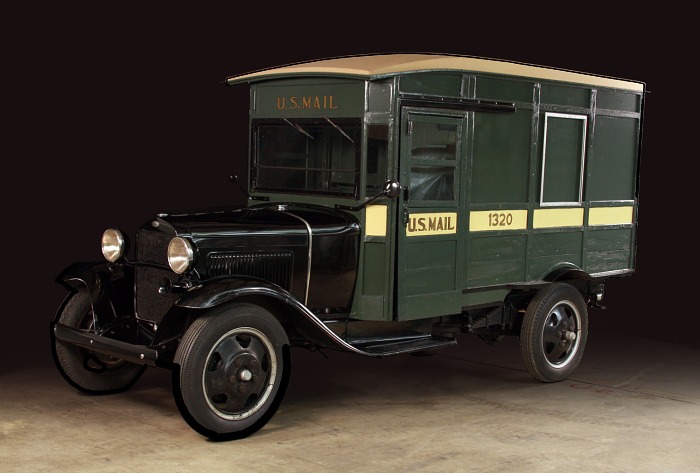
The possibilities inherent in self-propelled, horseless carriages immediately attracted postal officials when the vehicles first appeared in the late nineteenth century. With demand for home delivery steadily expanding, officials continuously sought faster and more effective ways of moving mail. The match between postal service and motorized vehicle was a great success. By 1920, the U.S. Post Office Department operated the world's largest civilian vehicular fleet.
The U.S. Post Office Department has experimented with a variety of motorized vehicles, including motorcycles. Special Delivery messengers often used motorcycles. In 1920 the U.S. War Department donated 1,000 standard-design motorcycles to the Post Office Department, but only a few proved practical for mail delivery. A three-wheeled motorcycle called the 'tri-car' and a tiny three-wheeled van known as the 'mailsters' were also tested.
Until about 1950, mail trucks transported both carriers and their mail to the location at which daily rounds began on foot. Faced with more homes to reach and more mail to deliver, the Post Office Department's solution was to put their letter carriers behind the wheel. By using vehicles to haul all that mail, carriers could complete longer routes in the same amount of time. By the 1960s, these vehicles had become an essential tool of city delivery service. Today letter carriers and their vehicles are commonplace in neighborhoods across the country.
Nancy A. Pope, National Postal Museum
